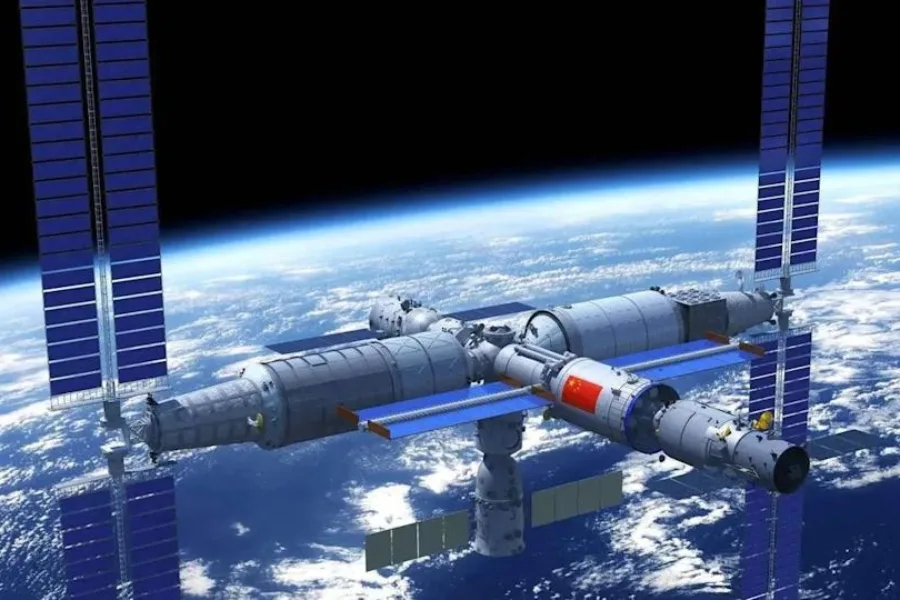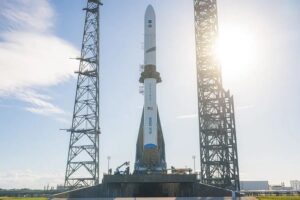Chinese Space Station Bacteria Discovery Stuns Scientists
thenewsbuzz May 22, 2025 1
In an exciting example of research from low Earth orbit, Chinese scientists reported a previously unknown species of bacteria from the Tiangong Space Station (Niallia tiangongensis), a great advancement in the continuing research of extraterrestrial life, as well as our understanding of space biology.
Finding During the Shenzhou 15 Mission
The finding was associated with the routine microbial sampling undertaken during the Shenzhou 15 mission which was completed in June 2023. Surface swabs were taken from the Tiangong Space Station, and material was then brought back to Earth to identify the unique bacteria.
The findings were published in the International Journal of Systematic and Evolutionary Microbiology (IJSEM) which represents the first time microbial species were identified from Tiangong — a modular space station operated by China since 2021, the legacy of microbials testing in space continues!
Describing Niallia tiangongensis
Niallia tiangongensis is described as aerobic and rod-shaped and capable of sporulation. The organism forms a close relationship with Niallia circulans, a well-known bacterium on Earth. Nevertheless, the particular aspect of the resident strain aboard the space station is that its genetics have changed through adaptation to the orbital environment.
One of the prominent features of Niallia tiangongensis is that it can degrade gelatin, which could play some role in nutrient cycling in extraterrestrial environments, as this is of great importance for future long term missions.
Genetic Evolution and Space Adaptation
Investigators revealed that the space variant underwent considerable genetic evolution, particularly regarding two proteins that scientists associate with lasting in extreme environments, which are:
- Create protective biofilms
- Mitigate oxidative stress
- Repair radiation-induced damage
These traits are particularly important for survival in orbit because living on the international space station goes along with increased radiation exposure and microgravity. These adaptations may provide valuable insight on how microbes evolve and possibly survive extremely long trips through deep space.
Implications for Human Space Flight and Space Hygiene
This finding has significant implications for space exploration and the health of space inhabitants. Although there is not any evidence yet that Niallia tiangongensis poses a risk to human health, there is still proper surveillance of microbial life aboard space vessels.
Because of its importance to astronaut safety, and the integrity of the science that takes place on missions that study other planets and moons, space agencies have a vested interest in space hygiene and contaminant management. Understanding how microbes behave in an extraterrestrial environment is vital to these efforts.
Microbes in Space: A Growing Field of Research
This is not the first example of space giving rise to new microbial species, research on the International Space Station (ISS) has yielded a variety of microbial bacteria strains, some could be beneficial for agriculture on Mars someday.
Importantly, there were 26 new bacteria strains found in the NASA clean rooms, which are some of the cleanest areas of the world. These results speak to how resilient life can be even in extreme environments.
A New Era of Space Health News
The finding Niallia tiangongensis adds to a growing body of health reports showing microbes in outer space. As nations implement longer missions to the Moon and Mars, understanding these tiny hitchhiker are going to become more pressing.
Their behaviors could affect bioregenerative life support systems to healthcare readiness in space. Studying bacteria like Niallia tiangongensis helps to safeguard space missions and open up biological possibilities that may aid in improving life on Earth.
As the Tiangong Space Station remains a source of new science, we can expect to see more reports fueled with some microbiological discovery woven into space exploration.









jdtkiy